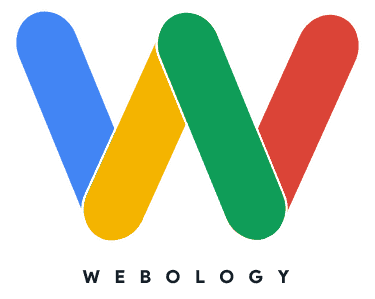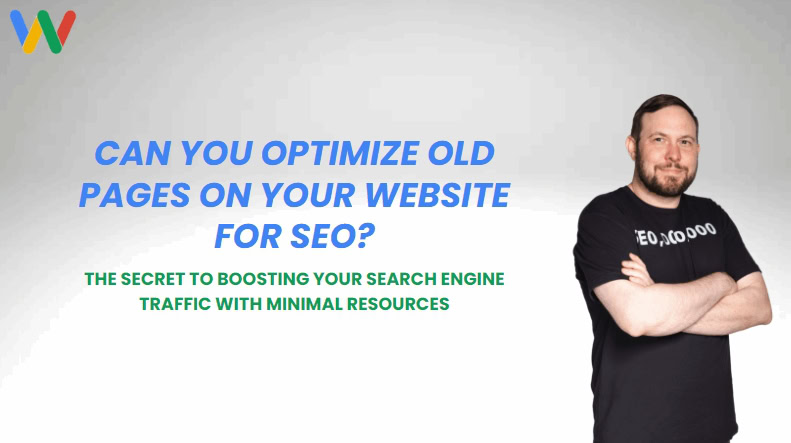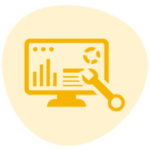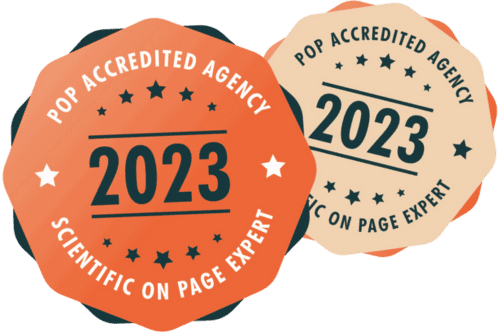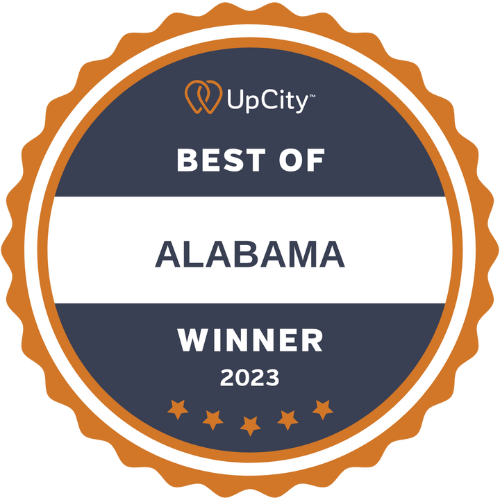Search engine optimization has a lot of moving parts, such as creating new content on popular search queries.
But, what about the content that’s already there? Can you optimize old pages on your website for SEO?
Is it worth it at all and if so, how much benefit might you see versus investing in new content?
The short answer is yes you should and at my agency, we always devote some time to it because updating old pages is an important part of retaining organic rankings. In fact we have standardized processes where we update our client’s most important content at several intervals after publishing, but let’s start with the basics first.
In this blog post, we’ll dive into why keeping your old pages up-to-date and SEO-friendly is a good practice for any sites more than a few months old.
But more importantly, you’ll learn how to optimize older web pages to maximize your website’s search engine traffic.
Table of Contents
Let’s buckle-in and explore some concepts around content ‘freshness’ algorithms and how you can influence them to gain more organic traffic.
Can You Optimize Old Pages On Your Website for SEO
Did you know updating and republishing old content can lead to a 106% increase in organic traffic? Part of it is that freshness metric I mentioned.
Plus, sometimes, it’s more important to renew older content than to publish new content because you have older pages ranking close to page 1 and just a little nudge is all it takes to get them there.
Search engine optimization has changed a lot in recent years; it continues to change as Google keeps introducing new updates.
Many techniques that might have worked in the past are no longer applicable to the modern Search.
As a webmaster, your role is to stay up-to-date and make sure your content checks all the latest SEO best practices. Treat your site as a whole and try to improve every aspect of it.
Why Should You Optimize Old Pages
It’s not just about staying in the good books of search engines like Google, Bing, and Perplexity.
Updating and optimizing old pages for SEO offers many other benefits. Here are a couple of prominent ones:
Improved Rankings, Traffic, and Conversions
When your content satisfies on-page SEO and user-experience best practices, nothing should keep it from ranking on the first SERP (Search Engine Results Page). Unless, of course, your page is attracting spammy backlinks from ‘bad neighbors’. Let’s discuss that real quick because it’s a concept most people don’t understand about SEO:
Blake’s Take: The concept of ‘bad neighborhoods in SEO linking‘ is a concept everyone with a website should understand. Put simply, having spammy or low-quality backlinks pointing to your site can negatively impact your search engine rankings if there’s too much of that going on versus quality back linking. So only associate your website with quality content by linking to and also getting links from high-quality websites that don’t engage in deceptive practices to manipulate traffic. That’s how you ensure rankings that last.
And an improved search engine ranking naturally boosts your organic traffic.
And, since fresh and up-to-date content enhances user experience, you can convert more visitors into leads or sales. So, updating your old posts and pages while also keeping up with your backlink profile is a great way to ensure your content is both helpful and found.
It’s Cost-effective
Creating new content from scratch often requires more resources than optimizing existing content. Trust me I know! This is post 131 we’re about to publish to our blog 😅
It’s SOOOO worth it though because we constantly get leads from our own content, and Amy’s a pro when it comes to figuring out the right strategy that Webology might use to improve a client’s business success. It might be SEO or it might be programmatic ads but either way, we’re able to have those conversations with amazing brands who are looking for an agency because of our own SEO efforts for this site.
Here’s One of the Things We Do:
You can find a page that’s performing well, optimize it further, and improve its search position with minimal resources. My experience is that this can be so rewarding because just a few hours spent updating old content can get it ranking and bringing in high-value leads!
It feels so good to be a business owner on a Friday like the one I had a few weeks ago when a company with over $100 million in annual revenue found one of our posts and engaged with our sales team! SEO and content marketing drive about 1/3 of our inbound leads at the moment so as an agency focused on growth, we’re going to double-down on content – both old and new!
How to Optimize Old Website Pages for SEO
Here’s a step-by-step procedure for optimizing a web page for better search engine visibility.
Run an SEO Audit
Start by running a complete SEO audit for your website with a tool like Screaming Frog.
The free plan is enough for small sites (Up to 500 pages).

The paid plan lets you run a full-site audit for unlimited pages.
With an SEO audit tool like this, you can identify different technical and on-page SEO issues such as:
- Page title tags
- Missing meta descriptions
- Broken internal links
- And more
Fixing these issues may not boost your rankings significantly, but it may impact your site’s SEO standing in the long run.
Identify Pages for Optimization with GSC
Making sure your website has correct information is always recommended. Plus, every page on your site should follow search engine guidelines.
However, not all existing pages are worth optimizing for SEO.
For instance, if a blog post isn’t getting any traction on search engines, chances are you can’t bump it to the first page with a few changes.
Besides, revising the content on every single page can be resource-intensive, especially if you have a large website.
Instead, what you can do is find the pages with the potential to rank on the first page.
Go to your website’s Google Search Console Performance Report.
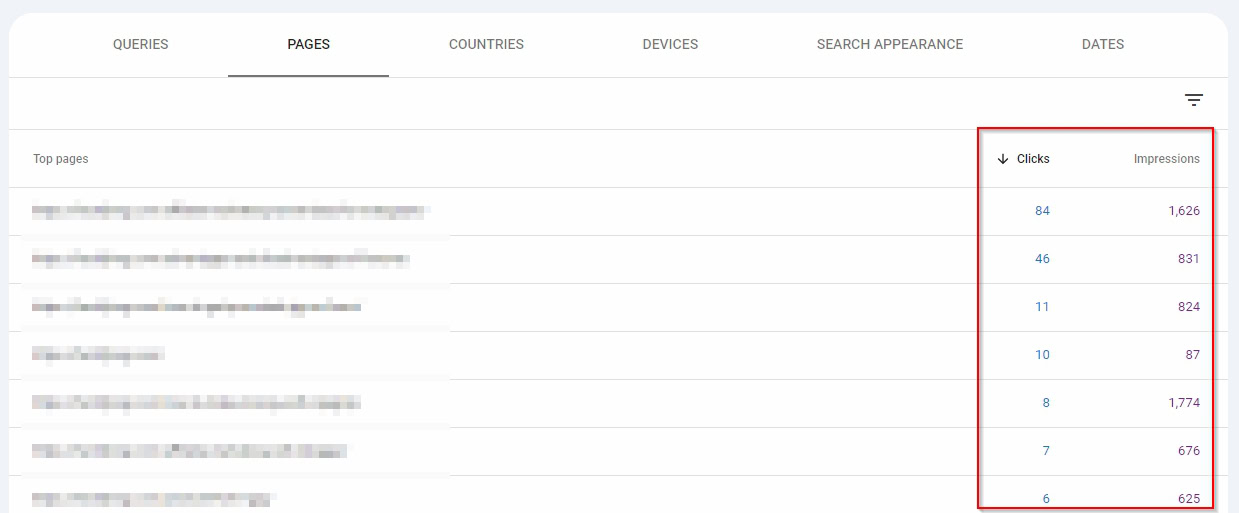
Note down the pages that are generating some clicks and impressions from Google.
By optimizing these pages, you can boost your organic traffic without creating new content.
Also, track the performance of high-priority pages for your business.
For instance, if you want to rank for “Plumbing services”, you want your service page to rank over your competition.
Optimizing high-priority pages for better search visibility should be on your priority list.
Optimize Your Content
Once you have a list of pages to fix, optimize, or update, it’s time to take action.
Keywords
Your target keyword needs to be in all the right places on a web page.
Search engines read your content to identify the keywords it should rank for.
So, include your target keyword or a close variation of it in the:
- Title (H1 in the case of WordPress)
- Subheadings (H2 is the most important)
- Meta description
- Image ALT text (It should be descriptive)
- Body copy (Don’t stuff – the keyword should blend in with the content naturally)
Visuals
Images and videos are engagement boosters.
They help you retain visitors, improving the dwell time (Time spent on site), which is a ranking factor, and the chances of conversions.
However, many webmasters underestimate the power of image size optimization.
Images can slow down your website if they’re too large.
Try to keep your images to less than 100 kb if possible. This is easy if you use a modern file type like .SVG images.
You can use a tool like Short Pixel to compress and optimize images of most common file types like .JPG or .PNG files.
![]()
Or, you can use a free WordPress plugin like EWWW Image Optimizer to bulk-optimize your images. That’s useful when you have a large media library full of images that were not optimized for web formatting.
Internal & External Links
A technical SEO audit might reveal some pages with no inbound or outgoing internal links.
This is bad for your content’s discoverability by search engines and users.
Pages with no internal links are called orphan pages.
You want to make sure there are no orphan pages on your site by:
- Running a site-wide audit
- Implementing internal linking best practices
Readability
Your content’s readability impacts its:
- Dwell time (the time an average visitor stays on the page)
- Bounce rate (People bouncing back without clicking on any internal link)
- Conversion rate (Visitors converting into leads or customers)
You can use a free tool like Grammarly to check your content’s readability.
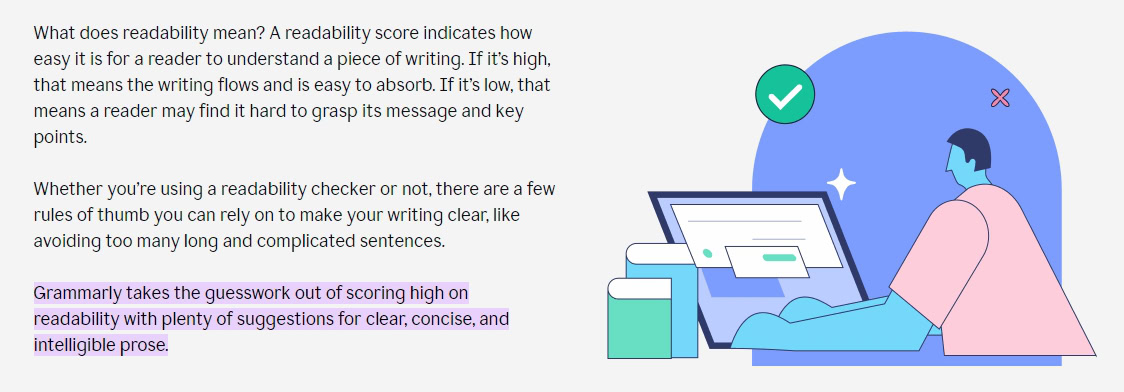
User-Intent Optimization
User intent refers to the thought process behind a searcher’s query.
The effectiveness of your content depends on how well it is optimized for the searcher’s intent.
For instance, “How to use a smartphone” is an informational intent search.
Whereas, “Best smartphones under $200” indicates that the searcher is in the buying mode.
But, how do you analyze the intent behind a search query if it’s unclear?
Observe the top-ranking web pages on Google for that query. See what type of content they are offering.
Are they providing general information or specific product recommendations?
This will give you an idea of the user intent and help you create relevant content that meets their needs.
Can you optimize old pages on your website for SEO: Conclusion
So, can you optimize old pages on your website for SEO? Absolutely.
Old pages tend to get outdated, which can make the information on them irrelevant.
Plus, SEO is an ever-changing industry; many techniques that used to work in the past are no longer applicable.
So, analyze your existing pages for potential updates and improvements with tools like GSC and Screaming Frog.
Implement the best practices discussed in this post to keep your pages SEO-friendly.
By optimizing existing pages, you can drive more search engine traffic with minimum resources. It’s a win-win situation.
Remember, SEO is an ongoing process and it’s important to regularly review and update your website’s content to stay competitive in search engine rankings.
Keep your content fresh, relevant and optimized for both users and search engines to see long-term success in SEO.
Related: How SEO Helps Your Business
